L'esquive
3 bis f Centre d’art contemporain / Aix-en-Provence
Festival Propagations. 2022
Le titre L’esquive fait référence à la manière de s’échapper subrepticement d’une situation, ou d’un lieu, de se glisser dans les interstices, de disparaître et peut-être réapparaître ailleurs. II s’agit d’aller voir de l’autre côté des murs qu’ils soient matériels ou mentaux, peut-être les deux à la fois, d’entrevoir d’autres mondes, d’autres paysages imaginaires. La performance est une conversation entre Dominique Pifarély au violon et son dispositif électroacoustique, prolongeant la matière sonore initiale de la composition musicale. L’installation cherche à se fondre dans l’écrin du jardin, dans sa mémoire, à le colorer d’une certaine façon par le son. Le travail de composition débute par la constitution d’une palette sonore suivie par la création des comportements dynamiques temporels et spatiaux des formes musicales issues de cette palette. Des petites sources sonores, non visibles, s’intègrent à la végétation, au mobilier du jardin : au sol, le son se déplace suivant les formes des plantations, volutes, carrés, etc. Dans les buissons, à mi-hauteur, le son délimite un territoire d’écoute. Dans les arbres, le son projeté vers le sol construit une sorte de canopée…
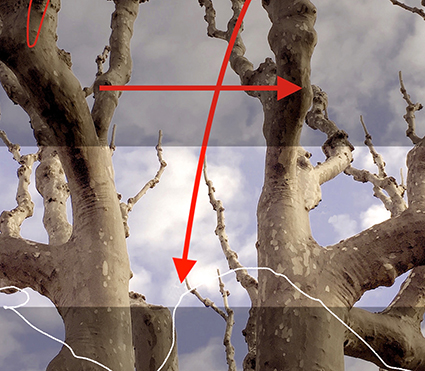







Crédits
Composition : Cécile Le Prado
Violon et électronique en temps réel : Dominique Pifarély
Réalisation en informatique musicale : Gaëtan Parseihian
En partenariat avec : le 3 bis f
Commande du GMEM
Production déléguée GMEM
Remerciements : Fatiha Allagui,
Martin Antiphon, Pierre-Marie Blind, Chantal Boursaux, Pascale Gérard, Michel Le Louarn, Music Unit,
Manuel Poletti
L'esquive
Création
Festival Propagations. 2022
Composition : Cécile Le Prado
Violon et électronique en temps réel : Dominique Pifarély
Réalisation en informatique musicale : Gaëtan Parseihian
Ingénieur du son : Damien Ripoll
3 bis f Centre d’Art Contemporain / Aix-en-Provence
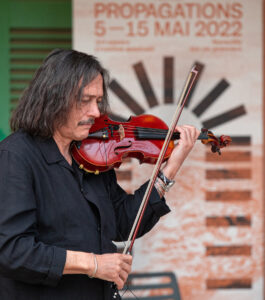
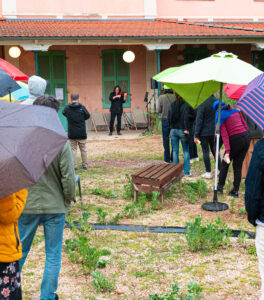
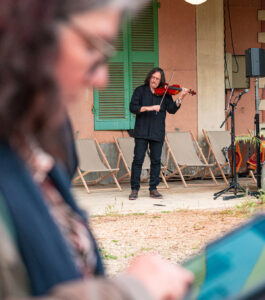
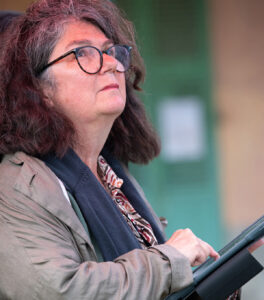
Le titre L’esquive fait référence à la manière de s’échapper subrepticement d’une situation, ou d’un lieu, de se glisser dans les interstices, de disparaître et peut-être réapparaître ailleurs. II s’agit d’aller voir de l’autre côté des murs qu’ils soient matériels ou mentaux, peut-être les deux à la fois, d’entrevoir d’autres mondes, d’autres paysages imaginaires. La performance est une conversation entre Dominique Pifarély au violon et son dispositif électroacoustique, prolongeant la matière sonore initiale de la composition musicale. L’installation cherche à se fondre dans l’écrin du jardin, dans sa mémoire, à le colorer d’une certaine façon par le son. Le travail de composition débute par la constitution d’une palette sonore suivie par la création des comportements dynamiques temporels et spatiaux des formes musicales issues de cette palette. Des petites sources sonores, non visibles, s’intègrent à la végétation, au mobilier du jardin : au sol, le son se déplace suivant les formes des plantations, volutes, carrés, etc. Dans les buissons, à mi-hauteur, le son délimite un territoire d’écoute. Dans les arbres, le son projeté vers le sol construit une sorte de canopée…








Crédits
Composition : Cécile Le Prado
Violon et électronique en temps réel : Dominique Pifarély
Réalisation en informatique musicale : Gaëtan Parseihian
En partenariat avec : le 3 bis f
Commande du GMEM
Production déléguée GMEM
Remerciements : Fatiha Allagui,
Martin Antiphon, Pierre-Marie Blind, Chantal Boursaux, Pascale Gérard, Michel Le Louarn, Music Unit,
Manuel Poletti